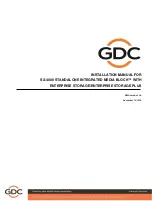
continued on next page
16
This retractor can be switched to a locking mode.
You
must have the retractor in the locking mode
to
use the seat belt with this car seat.
Switching to locking mode
: Slowly pull the shoulder belt
all the way out, then let it go back in
1-2 in.
(2.5-5 cm).
As it goes back in, you will most likely hear a ratcheting
sound.
Gently pull the belt to see if it has locked. You will not be
able to pull any more belt out if the lock has engaged.
Types of Retractors
This retractor always locks.
It will automatically lock after slowly pulling the seat belt
out at least halfway and letting the belt go back into the
retractor
1-2 in.
(2.5-5 cm).
15
Automatic Locking Retractor
Switchable Retractor
(most vehicles have this type)
Locking Latch Plate
If the retractor does not lock, it is most likely an Emer-
gency Locking Retractor. These retractors only lock during
a sudden stop or collision.
You will need to determine if your seat belt’s latch plate
can lock the belt. See step 5, “Check Latch Plates”.
5
Check Latch Plates
Latch plates are the
part of the seat belt
that goes into the
buckle.
To see if the latch
plate locks
:
1.
Buckle Vehicle Belt
2.
Firmly Tug Lap Por-
tion of Seat Belt While
Pulling It Up
If the vehicle belt does
not slide through the
latch plate, it’s locked.
Emergency Locking
Retractor
See Step 5, “Check Latch
Plates”.












































